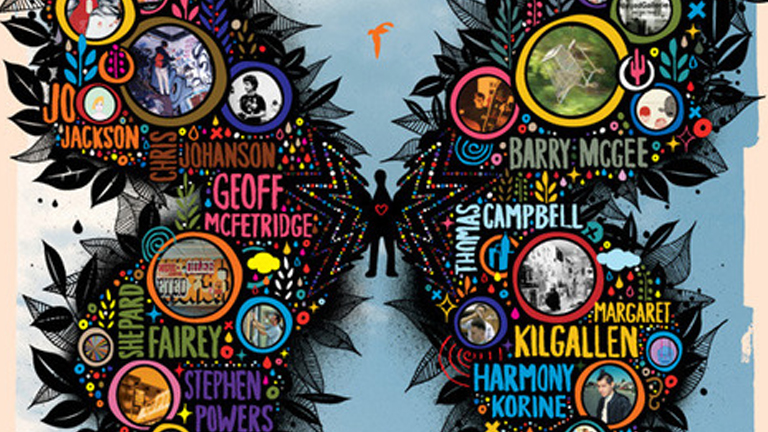They’re all there: the photographic chronicler Ed Templeton, the clowning Harmony Korine, the nerdy Chris Johanson, the honourable Barry McGee, the always gentle Mike Mills (who actually looks like a gentleman while being interviewed) and of course Aaron Rose himself whose Alleged Gallery in New York played such a vital role in the development of a generation of artists that “rooted in the DIY subcultures of skateboarding, surf, punk, hip hop & graffiti”. They, and many more, are all there in the documentary film Beautiful Losers. Some gained weight, some grew a beard. Beautiful Losers premiered at the SxSw Film festival and is now screened at festivals and in museums all across the US. It hasn’t been shown in Europe yet, but the producers were so kind to send us a copy. We liked it a lot.
The film is a nostalgic retrospective of what happened during the nineties in a little storefront gallery in New York City. It focuses on the question why this gallery turned out to be a magnet for a bunch of artists that shared a similar artistic attitude and became very successful, first in the underground and later in the established art world.
The result is a very stimulating (with strong quotes that can be included in the next issue of Penguin’s Dictionary of Quotations: “If you’re not dispossessed, why make art?” – Mike Mills) and personal, well made document. For example, the pace of the editing is just right. With a subject like this, you’d expect the obvious MTV like asthmatic editing with quick sound bites and a lot of After Effects plumage, which is fun for 3, but gets on your nerve after 4 minutes. The makers of this film happily resisted this temptation.
This said, the story develops a little slowly. After a while – and this is actually the only criticism we have – we get it. What do we get? Well, the paradoxical perspective on the past: on the one hand it was a time when these artists (BMX kids, punk rockers, skaters, addicts and other weirdo’s) were just messing around, doing their thing, encouraging and inspiring each other, not unlike thousands of other artists. On the other hand they knew something special was going on.
Luckily, during the second half Beautiful Losers tackles other issues like how to deal with the success and getting commercial assignments. Besides the retrospective parts with great archive footage, the film is a parade of beautiful art work and intimate scenes of artists working. Which is just so motivating to watch. You start to wonder: where can we experience this free spirited, creative atmosphere? Where do we find art history in the making today? I want to be part of it. That’s a great achievement indeed. And it’s probably what the artists featured in this doc would be pleased with the most.
 Submarine Channel
Submarine Channel